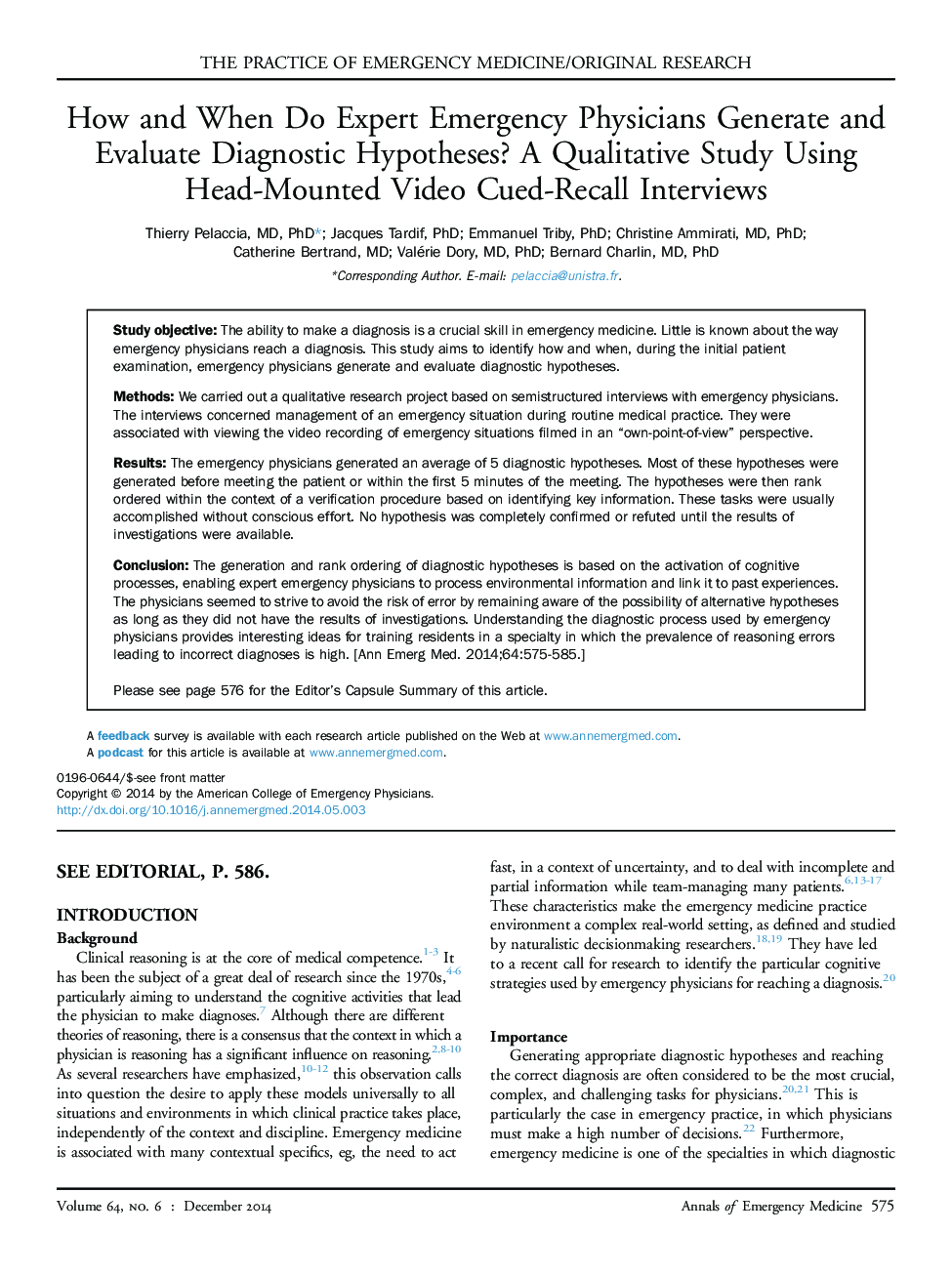| Article ID | Journal | Published Year | Pages | File Type |
|---|---|---|---|---|
| 6081204 | Annals of Emergency Medicine | 2014 | 11 Pages |
Study objectiveThe ability to make a diagnosis is a crucial skill in emergency medicine. Little is known about the way emergency physicians reach a diagnosis. This study aims to identify how and when, during the initial patient examination, emergency physicians generate and evaluate diagnostic hypotheses.MethodsWe carried out a qualitative research project based on semistructured interviews with emergency physicians. The interviews concerned management of an emergency situation during routine medical practice. They were associated with viewing the video recording of emergency situations filmed in an “own-point-of-view” perspective.ResultsThe emergency physicians generated an average of 5 diagnostic hypotheses. Most of these hypotheses were generated before meeting the patient or within the first 5 minutes of the meeting. The hypotheses were then rank ordered within the context of a verification procedure based on identifying key information. These tasks were usually accomplished without conscious effort. No hypothesis was completely confirmed or refuted until the results of investigations were available.ConclusionThe generation and rank ordering of diagnostic hypotheses is based on the activation of cognitive processes, enabling expert emergency physicians to process environmental information and link it to past experiences. The physicians seemed to strive to avoid the risk of error by remaining aware of the possibility of alternative hypotheses as long as they did not have the results of investigations. Understanding the diagnostic process used by emergency physicians provides interesting ideas for training residents in a specialty in which the prevalence of reasoning errors leading to incorrect diagnoses is high.
